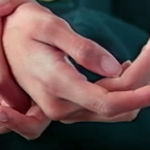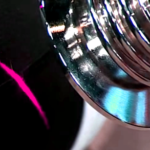There are several reasons why a person may want to remove his or her tattoo. Discussed below are some of the ways in which a tattoo can be removed and tattoo removal aftercare measures.
How does Tattoo Removal work?
Some of the popular methods to remove a tattoo are listed below:
- Laser tattoo removal: Laser tattoo removal is regarded to be the most effective way to remove tattoos. The process however does not come with the guarantee that it will fully erase the tattoo. It involves the use of laser light rays for disintegration of the tattoo ink pigments which later get eliminated from the body by the white cells. Depending on the size of the tattoo, more than one session of laser therapy may be needed to fully remove a tattoo. It may also be noted that the results of this procedure are also dependent on the type of colors that make up a tattoo. Black ink is easy to remove while other colors like blue, green, and red are harder to remove. Laser tattoo removal is an expensive process and individuals will have to pay for each session.
- Excision of tattoo: In this method, a dermatologic surgeon will numb the skin area with the tattoo, then remove the 1st and 2nd skin layers from there, and then stitch up the resultant wound. This procedure is good for smaller tattoos. In case of bigger tattoos, the doctor will need to perform skin graft on the resultant wound. Tattoo excision is a safe and easy method of tattoo removal.
- Dermabrasion: In this procedure the skin area with the tattoo is peeled away using caustic soda, salt, sandpaper, or a rotary medical equipment. Even though the tattoo region is anesthetized, the process is extremely painful. The treated skin is immediately dressed to prevent scarring and bleeding. The area is at risk to infection and aftercare is vital. Scars from this procedure take a long time to heal. Dermabrasion cannot be used for removing tattoos on the face or other sensitive parts of the body. It is generally used for removing really old tattoos where the ink may be penetrated into the deeper skin layers.
- Tattoo removal cream: This is an inexpensive method to remove tattoos. However, the results are not guaranteed and it can take a long time for the tattoo to be removed. Individuals do not need to visit a professional to use tattoo removal cream; it can be applied directly on the skin with the tattoo. The cream will keep sucking the ink up to the surface and the ink will gradually fade away over a period of time.
Tattoo Removal Aftercare
Presented below are tattoo removal aftercare tips for procedures like laser tattoo removal, Dermabrasion, and excision.
- Ask the doctor/tattoo removal professional about the number of hours that you need to wait before taking a shower. Do not let showers with high pressure water to directly fall on the treated skin. The area should not be soaked; hence swimming, hot tubs, and baths need to be avoided till the area heals.
- The bandage needs to stay put for at least 3 days after tattoo removal. It is important to keep the area, clean, dry, and sterile. It is also important to regularly change the bandage. Apply any topical antibiotics or other creams as suggested by the doctor.
- Ensure that the treated skin area stays covered when going outside. Do not expose it to sunlight. After consulting the doctor, apply sunscreen on it when out in sunny conditions.
- Tattoo removal is marked by damage to the skin. Hence, the body needs to be strong enough to promote faster healing of the damaged skin area. It is therefore important to enhance the immune system, and ensure that it is at its optimum capacity, weeks before undergoing a tattoo removal process. Eat a healthy diet consisting of foods that boost the immune system and which are abundant in antioxidants.
- A healthy immune system will allow the lymphatic system to effectively flush out the ink pigments from the skin cells. It will also ensure that the treated skin patches up evenly and nicely.
- Relaxation and rest will help prevent extra workload on the body and thus conserve the body’s energy for repair work on the damaged skin. Rest does not mean complete bed-rest, but limiting physical activities, playing sports, or going to the gym till such time as recommended by the doctor. Also, avoid all exercise, activities that will result in friction. The downtime for smaller tattoos is less, while it is more for bigger tattoo removal procedures.
- Avoid infections of the treated skin by following personal hygiene measures like regularly washing hands, taking daily showers, daily brushing of teeth, etc.
- A tranquil mind is necessary for a tranquil, healthy body. Hence, take all necessary steps to avoid excess stress, sleep well, and do yoga, meditation, etc.
- Smoking leads to narrowing of the blood vessels, which in turn reduces the flow of blood to the treated skin area, thereby delaying and hampering the healing process. Hence, do not smoke, and if possible, quit smoking altogether.
- Keep all the scheduled appointments of doctor visits for aftercare and do not miss any of them.
Guidelines to avoid side effects/complications of tattoo removal
After a tattoo removal, it takes around 6 to 8 weeks for the discomfort to subside and the treated skin to heal completely. This recovery period may be marked by some side effects as mentioned below. Following correct tattoo removal aftercare can help overcome and/or prevent such side effects/complications of tattoo removal.
- It is normal to experience swelling of skin area after a tattoo removal procedure. Gently icing the affected area, or using cold compresses, for several 10 minute sessions can help alleviate the swelling and inflammation. Also, elevation can help improve blood to the treated skin area, ease swelling, and promote healing. Swelling typically subsides in 3 to 5 days. If it continues, visit your doctor.
- Blistering refers to appearance of bubbles-like bumps on the treated skin area. People with sensitive skin are most prone to blistering after tattoo removal. Blistering occurs so that the skin can be protected from exposure to bacteria and other toxins. It lasts for around 3 to 5 days. Visit a doctor, if blistering persists and/or if it is accompanied by pain.
- The pain during tattoo removal is comparable to the one while applying tattoo. Mostly, it is bearable and is akin to a rubber band hitting against the skin. Topical numbing creams, lidocaine injections, ice-packs and chilling machines that blow cold air on the area of the skin, before and during and post the treatment are some of the pain management practices.
- Redness may occur just after the tattoo removal procedure and it may persist for up to 3 days. It occurs due to minor bleeding under the skin and is often indicative of increased sensitivity of the top skin layers. If there is excessive redness or bleeding, then pay a visit to your doctor.
- Dryness or crusting is quite common on skin areas where tattoo removal procedures were performed. It can cause the skin to look worse than it actually is, and occasionally it may even cause the tattoo to seem darker. Healing of the scabbing will however lighten the skin. Avoid removing or picking the scabs/crusts as it can result in scarring. Crusting helps protect the damaged skin so let it fall off on its own.
- Itchiness after tattoo removal is common, but not all may experience it. It can last from a few hours to up to 3 weeks. Do not scratch the treated area to find relief from itchiness as may further damage the skin and increase the risk to infections. OTC antihistamines may be taken to ease itchiness.
- It is important to know the signs and symptoms infection of the treated skin area. Infection is typically accompanied by pain, excessive redness, lesion formation, discharge, and discomfort. It is important to seek immediate medical attention in case of infections.
- Scarring after tattoo removal is quite rare. There may also be hypopigmentation or hyperpigmentation of the treated area. Minor scarring can be corrected via use of OTC silicone scar patches or application of Vitamin E oil. Consult a doctor in case scarring is dark or extensive.

